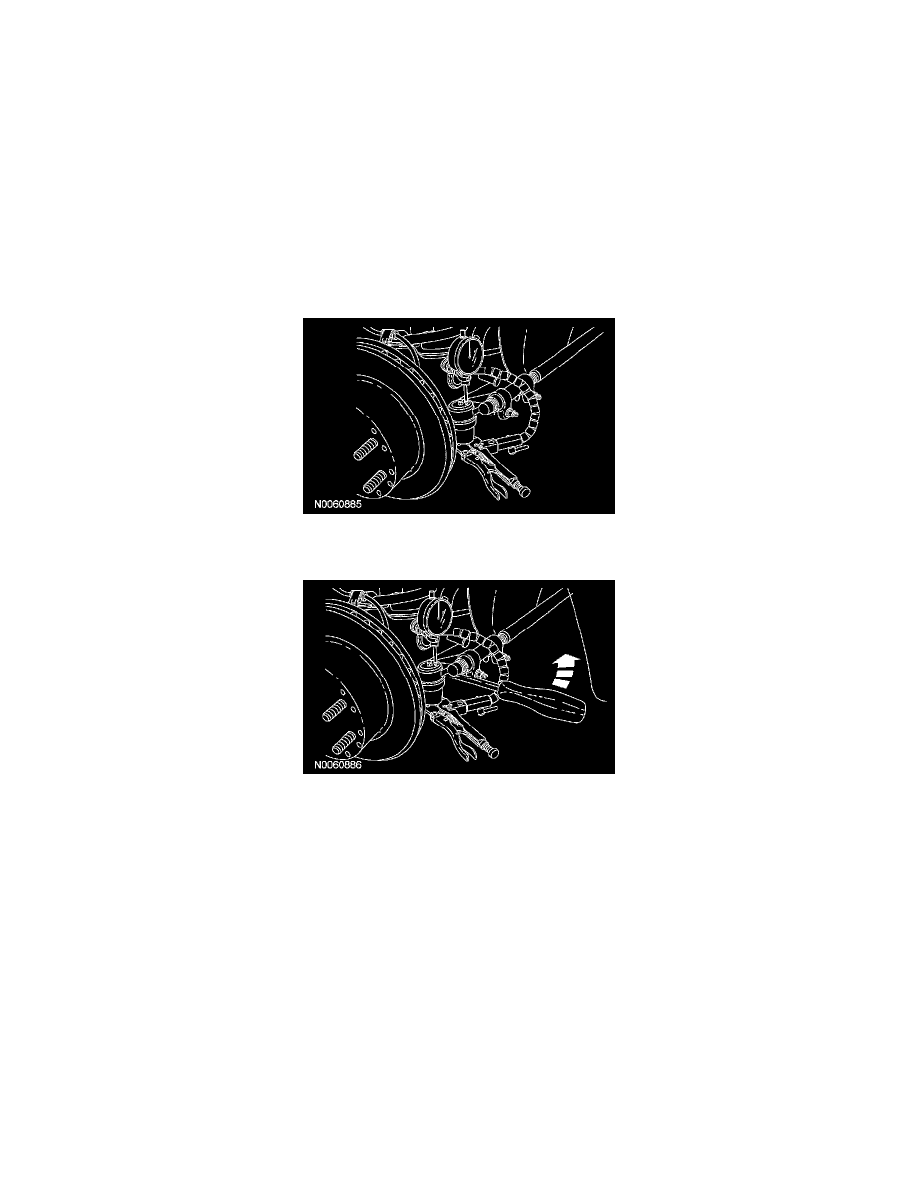E 350 V8-6.0L DSL Turbo (2007)

Tie Rod End: Testing and Inspection
Outer Tie-Rod Ends
Outer Tie-Rod Ends
NOTE: The outer tie-rod end ball studs are spring loaded and will normally have a small amount of up and down movement when the spring is
compressed. However, excessive vertical movement of the studs relative to the sockets may indicate excessive wear.
1. Turn the steering wheel to the straight-ahead position and turn the ignition switch to the OFF position.
2. Remove the wheel and tire assembly.
3. Check and, if necessary, adjust the front wheel bearings. Refer to Vehicle/Testing and Inspection.
4. NOTE: The flexible arm of the dial indicator must be attached to the nut of the tie-rod end being tested.
Install a suitable dial indicator with a flexible arm to the outer tie-rod end being tested.
^
Position the flex-arm so that the indicator is positioned on the center of the tie-rod end cap.
5. Have an assistant grasp the tire and move the steering linkage from side-to-side. Observe and record the movement measured with the dial
indicator.
6. Zero the dial indicator.
7. NOTE: Make sure that the tie-rod end does not roll during inspection.
Using a suitable prying device (approximately 457 mm [18 inch] long), pry up on the tie-rod end forging while observing the movement of the
dial indicator pointer.
^
Only apply moderate force. Do not move the vehicle suspension.
8. If the movement of the tie-rod end exceeds 1.52 mm (0.06 inch), install a new tie-rod end.
